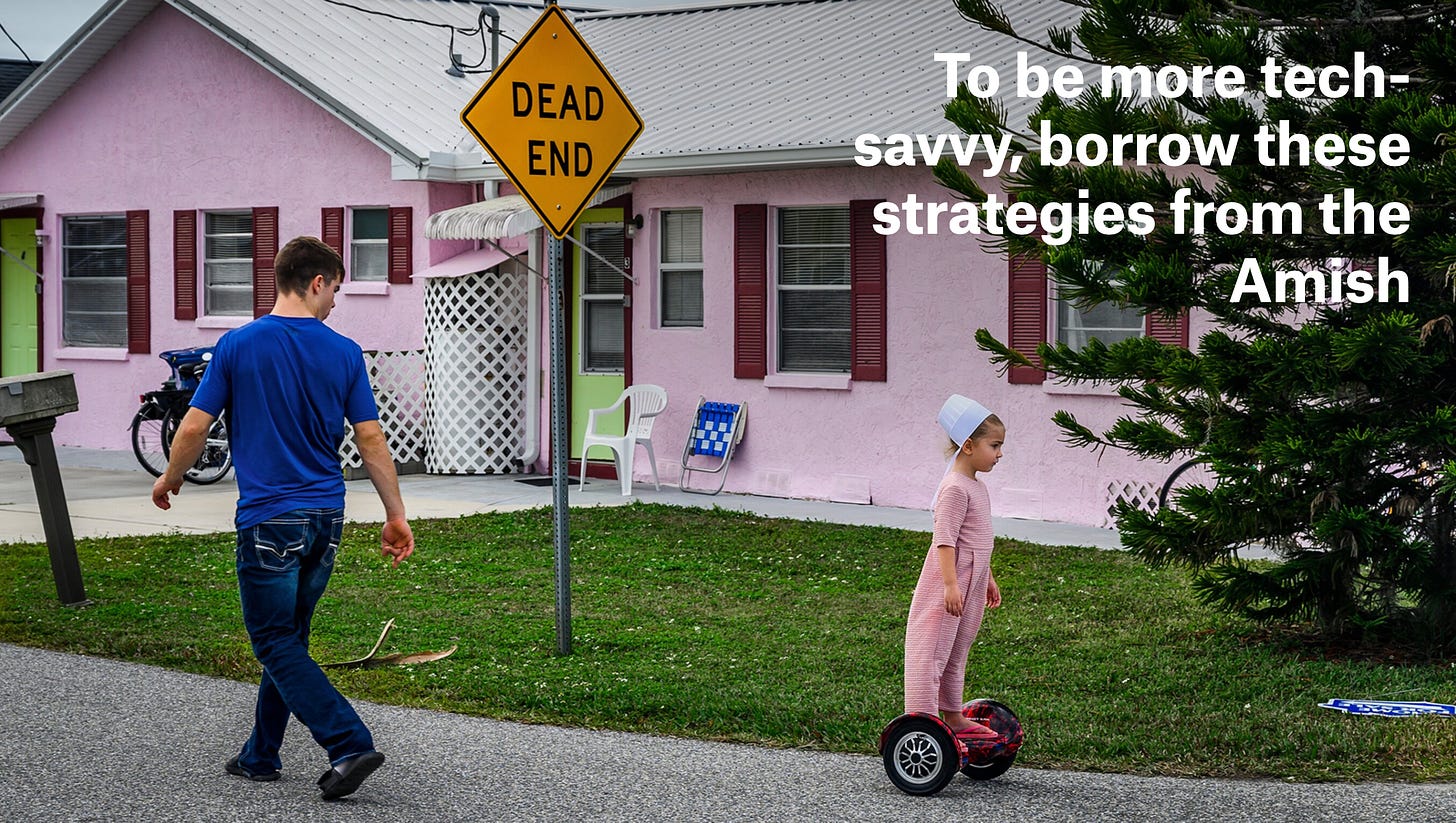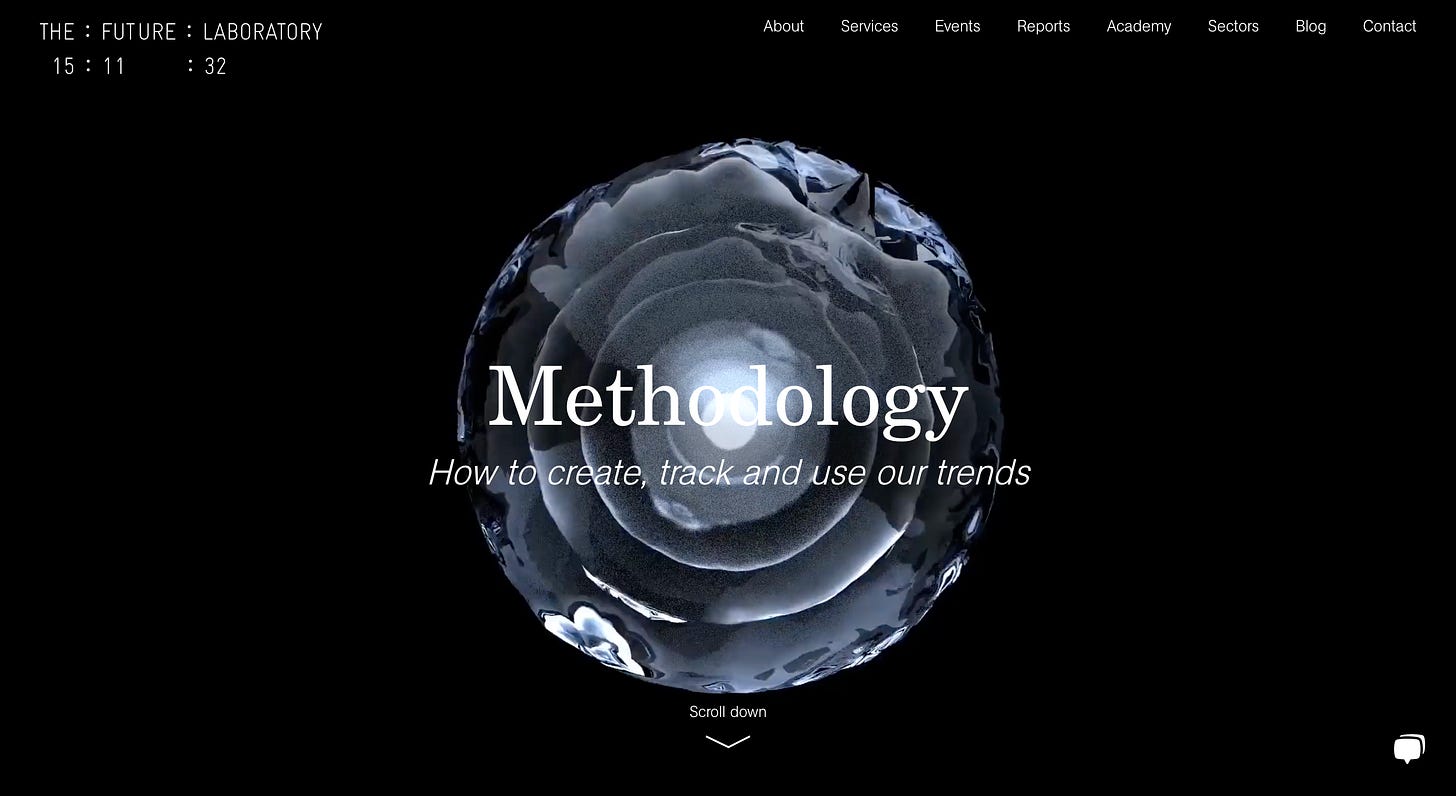⏩✨The Nexialist #0021
Quicky Nexialist | Quiet Storm | Future of Sex | Sex in Space | Vintage Flirt | Gaudí | Weird Dreams | Amish Tech | Planning Toolbox | Future Laboratory and Decolonozing Foresight
Welcome to my new official habit, The Nexialist…
They say it takes 21 days to build a habit, and this is the 21st edition of The Nexialist. So we deserve a celebration! This week, however, the universe sent me a lot of work so I’ll try my best to have a quicky edition with some links I’ve been saving here, but not so much of my view on it. I hope this tingles your neural connections and brings some virtual cuddles to you. If you are looking for more, I recommend taking a look at some of the previous editions, in case you missed anything.
👄Quiet Storm
As I told you before, I love Earworm and Estelle Caswell, who does such beautiful work in it. She uses her platform to tell such relevant stories, and it is exactly what the word excellence means. In this one, she invites the people who can tell the origins and success of the Quiet Storm radio format. Even in Brazil, I remember this style of radio shows when I was growing up, with a sultry voice, sometimes translating romantic songs to Portuguese. About this episode:
Late one evening in the summer of 1976, a Howard University student named Melvin Lindsey was tapped to fill in as a host at WHUR, the university-owned Black radio station. He chose a lineup of his favorite R&B ballads to soundtrack Washington, DC, that evening. The show was an accidental success. Shortly thereafter he was hired, and his show had a name: The Quiet Storm.
Quiet Storm radio shows have since become a staple of Black communities across the United States. In the video above Estelle Caswell, along with ethnomusicologist Fredara Hadley, break down exactly what makes Quiet Storm such a beloved black radio tradition. Also featured in the episode are radio hosts, Angela Stribling, Al Wood, and John Monds.
🍑Future of Sex
Here are the three main points, but the post is filled with data in case you want to deep-dive into how the pandemic influenced our take on sex.
“According to This Big-Deal Data, Your Post-Pandemic Sex Life Is Going to Be…Interesting
-The casual hookup is about to be way less of a thing
-We’re going to be the Commitment Generation
-And we’ll get more experimental in the process
Read: What Your Sex Life Will Look Like After the Pandemic - Cosmopolitan
🚀Sex in Space
Always lovely scientists looking at something we all wanted to know. Or was it only me?
Read: Sex Positions in Space Will Be Amazing, Scientist Says - Futurism
🤤Vintage Flirt
“James Dean and Paul Newman flirt during their 1954 screen test for Elia Kazan's East of Eden.
Rumor has it Eartha Kitt had a threesome with the handsome actors. She once said: “That time back in my dance studio ranks as one of the most celestial experiences of my life. Those two beauties transported me to heaven. I never knew that lovemaking could be so beautiful.”
I don’t know about you, but this piece of memory triggers a lot of thoughts…
🌸Gaudí
Capicua is a Portuguese rapper, and this song/video came to my attention at the beginning of the pandemic. The video and song still have the power to cheer me up: “I’m going to glue these little shards and make a Gaudí.”
Also, I learned that Capicua is from Catalan, cap i cua, head and tail. It also means Palindromic number (numbers that are the same both backward and forwards). In Domino, Capicua happens “when the winning bone can play on either open end of the layout.” I want a pet to name her that!
🛌Weird Dreams are Made of What?
Read: Weird dreams train us for the unexpected, says new theory - The Guardian
“AI inspires hypothesis that sleeping human brain might try to break its overfamiliarity with daily data.” I just find it fascinating to me how we can (possibly) learn about the way our brains work while developing artificial intelligence.
A common problem when it comes to training artificial intelligence (AI) is that it becomes too familiar with the data it’s trained on, because it assumes that this training set is a perfect representation of anything it might encounter. Scientists try to fix this “overfitting” by introducing some chaos into the data, in the form of noisy or corrupted inputs.
Hoel suggests that our brains do something similar when we dream. Particularly as we get older, our days become statistically pretty similar to one another, meaning our “training set” is limited. But we still need to be able to generalise our abilities to new and unexpected circumstances – whether it’s our physical movements and reactions, or our mental processes and understanding. We can’t inject random noise into our brains while we’re awake, because we need to concentrate on the tasks at hand, and perform them as accurately as possible. But sleep is a different matter.
By creating a weirded version of the world, dreams may make our understanding of it less simplistic and more well-rounded. “It is the very strangeness of dreams in their divergence from waking experience that gives them their biological function,” Hoel said.
🤯Amish Tech

This blew my mind, really:
Read: To be more tech-savvy, borrow these strategies from the Amish | Psyche Ideas
For one thing, you might consider putting any new app or gadget through a trial period. Think about what you want out of the tool, try it out, discuss its influence with people you’re close to – and only then make a decision, adjusting your usage to meet your goals. If following people at random on Instagram turns into an addictive distraction, or puts pressure on you to keep up with the Joneses, consider following just a few friends and family members. Using your laptop or smartphone mindlessly? Maybe lock your devices in a closet whenever you don’t need them, just to create that added barrier to pointless use.
As you pick and choose, adapting technology to your needs, it might help to establish a set of guiding principles. For example, the Amish ethos places prime value on family and neighbourly life. It also strives to maintain a separation from the world, which informs their policy of not connecting to the electric grid, but rather powering appliances with batteries or other alternatives. For Tang – who is now adding features to the Light Phone II in response to customers’ frustrations with the extremely minimal first version – the company’s core principles now include commitments to stay ad-free, and to ensure that every action has a clear ending. That means saying ‘yes’ to calling an Uber on a Light Phone, but ‘no’ to social media’s infinite feeds. You might want to borrow the ‘no infinite feeds’ policy from Tang, as well as the relatively relaxed approach of the Amish toward technology at work but greater restrictiveness at home. (Yoder has email for work, but he and his wife go to the post office regularly to mail personal letters.)
Above all, decide to be OK with seeming eccentric. The Amish’s unusual approach has allowed them to survive for centuries, even while other cooperatives and intentional communities fall by the wayside. Most Silicon Valley CEOs severely restrict their own children’s access to phones and screens. Given that current research suggests that millions of people are carrying machines in their pockets that stress them out and make them unhappy, perhaps an approach that seems a little unusual is called for. Even if that means taking technology lessons from the Amish.
🧠Planning Toolbox
Baiba Matisone was very kind and awesome to make this document filled with frameworks for planners. I wish I had access to that when I was younger.
🔭Future Laboratory Methodology
I’m a big fan of companies that open their methodology. Especially when it’s so beautiful to navigate.
🛰Decolonizing Foresight
Lydia Caldana created an open-source platform that we all wanted. It’s worth exploring and (collaborating).
Future Resources is a platform that decolonizes foresight / strategy / innovation by radically democratizing access to sources of information, events and networking. It is built on the premise that these industries need more representation of ethnically, geographically, bodily, economically, etc, diverse people in leadership positions.
Through the curation of events, websites, books, podcasts, newsletters, communities, databases, among others, and by spotlighting pioneering womxn and non-binary folks in the field, Future Resources works as a horizontal tool for knowledge sharing, community building and networking.
Womxn and non-binary people of all colors, sizes, places of origin, sexual orientations, gender identities and backgrounds are invited to contribute to the tool. There is no 'right' or 'wrong' and we always welcome feedback.
❤️If anything made your brain tingle, click like and don't hesitate to share it with the world. It helps The Nexialist to reach more curious minds. See you next week!🦦
🫀If you enjoyed this newsletter, please share it with your friends. If someone amazing sent it to you, tell them you love them, and you can subscribe at thenexialist.substack.com. If you want to know what a Nexialist is, click here. If you want to introduce yourself or give me any feedback, I would love to hear from you. Drop me an e-mail or say hi on LinkedIn or Instagram.









